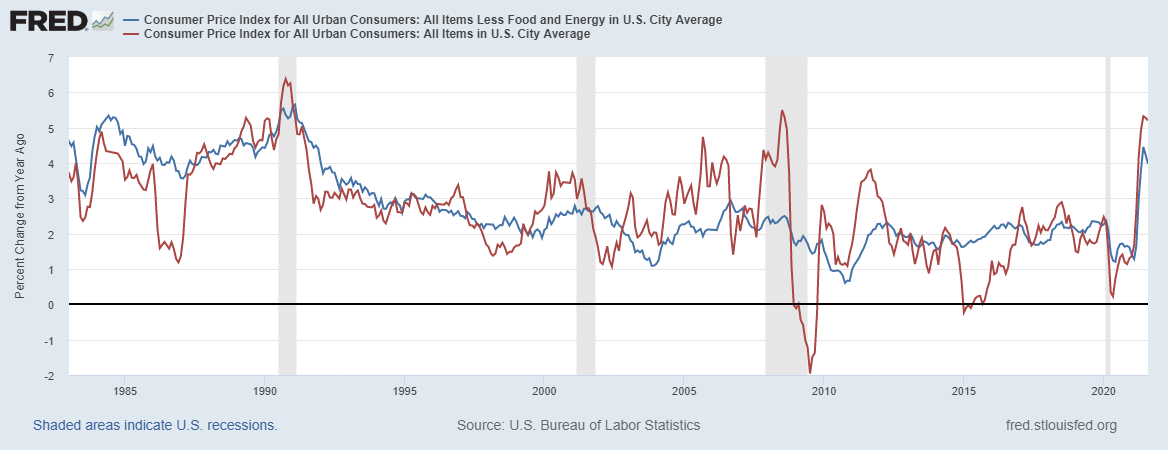|
Higher Education Price Index
The Higher Education Price Index (HEPI) is a measure of the inflation rate applicable to United States higher education. HEPI measures the average relative level in the prices of a fixed market basket of goods and services typically purchased by colleges and universities through current-fund educational and general expenditures, excluding expenditures for research. Educational and general expenditures include the functions of instruction and departmental research, extension and public services, educational programs such as workshops and instructional institutes supported by sponsors outside the institution, student services, general administration and expenses, staff benefits, libraries, and operation and maintenance of the physical plant. Sponsored research, sales and services of education departments, and auxiliary enterprises are not priced by HEPI. The index is calculated on a fiscal year basis ending each June 30, by the Commonfund Institute, a branch of Commonfund, a non ... [...More Info...] [...Related Items...] OR: [Wikipedia] [Google] [Baidu] |
Inflation
In economics, inflation is an increase in the average price of goods and services in terms of money. This increase is measured using a price index, typically a consumer price index (CPI). When the general price level rises, each unit of currency buys fewer goods and services; consequently, inflation corresponds to a reduction in the purchasing power of money. The opposite of CPI inflation is deflation, a decrease in the general price level of goods and services. The common measure of inflation is the inflation rate, the annualized percentage change in a general price index. Changes in inflation are widely attributed to fluctuations in Real versus nominal value (economics), real demand for goods and services (also known as demand shocks, including changes in fiscal policy, fiscal or monetary policy), changes in available supplies such as during energy crisis, energy crises (also known as supply shocks), or changes in inflation expectations, which may be self-fulfilling. Moderat ... [...More Info...] [...Related Items...] OR: [Wikipedia] [Google] [Baidu] |
United States
The United States of America (USA), also known as the United States (U.S.) or America, is a country primarily located in North America. It is a federal republic of 50 U.S. state, states and a federal capital district, Washington, D.C. The 48 contiguous states border Canada to the north and Mexico to the south, with the semi-exclave of Alaska in the northwest and the archipelago of Hawaii in the Pacific Ocean. The United States asserts sovereignty over five Territories of the United States, major island territories and United States Minor Outlying Islands, various uninhabited islands in Oceania and the Caribbean. It is a megadiverse country, with the world's List of countries and dependencies by area, third-largest land area and List of countries and dependencies by population, third-largest population, exceeding 340 million. Its three Metropolitan statistical areas by population, largest metropolitan areas are New York metropolitan area, New York, Greater Los Angeles, Los Angel ... [...More Info...] [...Related Items...] OR: [Wikipedia] [Google] [Baidu] |
Higher Education
Tertiary education (higher education, or post-secondary education) is the educational level following the completion of secondary education. The World Bank defines tertiary education as including universities, colleges, and vocational schools. ''Higher education'' is taken to include undergraduate and postgraduate education, while vocational education beyond secondary education is known as ''further education'' in the United Kingdom, or included under the category of ''continuing education'' in the United States. Tertiary education generally culminates in the receipt of Academic certificate, certificates, diplomas, or academic degrees. Higher education represents levels 5, 6, 7, and 8 of the ISCED#2011 version, 2011 version of the International Standard Classification of Education structure. Tertiary education at a nondegree level is sometimes referred to as further education or continuing education as distinct from higher education. UNESCO stated that tertiary education focu ... [...More Info...] [...Related Items...] OR: [Wikipedia] [Google] [Baidu] |
Fiscal Year
A fiscal year (also known as a financial year, or sometimes budget year) is used in government accounting, which varies between countries, and for budget purposes. It is also used for financial reporting by businesses and other organizations. Laws in many jurisdictions require company financial reports to be prepared and published on an annual basis but generally with the reporting period not aligning with the calendar year (1 January to 31 December). Taxation laws generally require accounting records to be maintained and taxes calculated on an annual basis, which usually corresponds to the fiscal year used for government purposes. The calculation of tax on an annual basis is especially relevant for direct taxes, such as income tax. Many annual government fees—such as council tax and license fees are also levied on a fiscal year basis, but others are charged on an anniversary basis. Some companies, such as Cisco Systems, end their fiscal year on the same day of the week each ye ... [...More Info...] [...Related Items...] OR: [Wikipedia] [Google] [Baidu] |
Commonfund Institute
Based in Connecticut, Commonfund is an American asset management firm founded in 1971 with a seed grant from the Ford Foundation. As a private nonprofit organization, the firm manages customized investment programs for endowments, foundations, public pension funds, and other mission-driven institutions. The organization has additional offices in New York City, San Francisco, London, and Beijing. Along with Yale University CIO David F. Swensen, Commonfund helped pioneer applying the "endowment model" of investing to institutional investor portfolios. As of 2021, Commonfund had approximately US$28 billion in assets under management. Commonfund is currently the second-largest manager of outsourced endowment assets in the U.S. (surpassed only by the Vanguard Group). Commonfund also operates CF Private Equity, which builds and manages private markets portfolios, and the Commonfund Institute, which provides the investment management field with investment research and professional devel ... [...More Info...] [...Related Items...] OR: [Wikipedia] [Google] [Baidu] |
Non-profit
A nonprofit organization (NPO), also known as a nonbusiness entity, nonprofit institution, not-for-profit organization, or simply a nonprofit, is a non-governmental (private) legal entity organized and operated for a collective, public, or social benefit, as opposed to an entity that operates as a business aiming to generate a Profit (accounting), profit for its owners. A nonprofit organization is subject to the non-distribution constraint: any revenues that exceed expenses must be committed to the organization's purpose, not taken by private parties. Depending on the local laws, charities are regularly organized as non-profits. A host of organizations may be non-profit, including some political organizations, schools, hospitals, business associations, churches, foundations, social clubs, and consumer cooperatives. Nonprofit entities may seek approval from governments to be Tax exemption, tax-exempt, and some may also qualify to receive tax-deductible contributions, but an enti ... [...More Info...] [...Related Items...] OR: [Wikipedia] [Google] [Baidu] |
College
A college (Latin: ''collegium'') may be a tertiary educational institution (sometimes awarding degrees), part of a collegiate university, an institution offering vocational education, a further education institution, or a secondary school. In most of the world, a college may be a high school or secondary school, a college of further education, a training institution that awards trade qualifications, a higher-education provider that does not have university status (often without its own degree-awarding powers), or a constituent part of a university. In the United States, a college may offer undergraduate programs – either as an independent institution or as the undergraduate program of a university – or it may be a residential college of a university or a community college, referring to (primarily public) higher education institutions that aim to provide affordable and accessible education, usually limited to two-year associate degrees. The word "college" is g ... [...More Info...] [...Related Items...] OR: [Wikipedia] [Google] [Baidu] |
University
A university () is an educational institution, institution of tertiary education and research which awards academic degrees in several Discipline (academia), academic disciplines. ''University'' is derived from the Latin phrase , which roughly means "community of teachers and scholars". Universities typically offer both undergraduate education, undergraduate and postgraduate education, postgraduate programs. The first universities in Europe were established by Catholic Church, Catholic monks. The University of Bologna (), Italy, which was founded in 1088, is the first university in the sense of: *being a high degree-awarding institute. *using the word (which was coined at its foundation). *having independence from the ecclesiastic schools and issuing secular as well as non-secular degrees (with teaching conducted by both clergy and non-clergy): grammar, rhetoric, logic, theology, canon law and notarial law.Hunt Janin: "The university in medieval life, 1179–1499", McFarland, 2 ... [...More Info...] [...Related Items...] OR: [Wikipedia] [Google] [Baidu] |
Financial Endowment
A financial endowment is a legal structure for managing, and in many cases indefinitely perpetuating, a pool of Financial instrument, financial, real estate, or other investments for a specific purpose according to Donor intent, the will of its founders and donors. Endowments are often structured so that the inflation-adjusted principal (finance), principal or "corpus" value is kept intact, while a portion of the fund can be (and in some cases must be) spent each year, utilizing a prudent spending policy. Endowments are often governed and managed either as a Nonprofit organization, nonprofit corporation, a charitable foundation, or a private foundation that, while serving a good cause, might not qualify as a public charity. In some jurisdictions, it is common for endowed funds to be established as a trust (law), trust independent of the organizations and the causes the endowment is meant to serve. Institutions that commonly manage endowments include academic institutions (e.g., co ... [...More Info...] [...Related Items...] OR: [Wikipedia] [Google] [Baidu] |
Chronicle Of Higher Education
''The Chronicle of Higher Education'' is an American newspaper and website that presents news, information, and jobs for college and university faculty and student affairs professionals, including staff members and administrators. A subscription is required to read some articles. ''The Chronicle'' is based in Washington, D.C., and is a major news service covering U.S. academia. It is published every weekday online and appears weekly in print except for every other week in May, June, July, and August and the last three weeks in December. In print, ''The Chronicle'' is published in two sections: Section A with news, section B with job listings, and ''The Chronicle Review,'' a magazine of arts and ideas. It also publishes Arts & Letters Daily. History In 1957, Corbin Gwaltney, founder and editor of the alumni magazine at Johns Hopkins University in Baltimore, joined with editors from magazines of several other colleges and universities for an editorial project to investigat ... [...More Info...] [...Related Items...] OR: [Wikipedia] [Google] [Baidu] |
United States Consumer Price Index
The United States Consumer Price Index (CPI) is a family of various consumer price indices published monthly by the United States Bureau of Labor Statistics (BLS). The most commonly used indices are the CPI-U and the CPI-W, though many alternative versions exist for different uses. For example, the CPI-U is the most popularly cited measure of consumer inflation in the United States, while the CPI-W is used to index Social Security benefit payments. Methodology Item coverage The CPI measures the monthly price change of a basket of discretionary consumption goods whose price is borne by the consumer. There are eight major categories of items that are included in the CPI coverage; each includes both goods and services: * Food and beverages * Housing * Apparel * Transportation * Medical care * Recreation * Education and communication * Other goods and services In line with this framework, the CPI excludes items such as life insurance, investment securities, financing costs, a ... [...More Info...] [...Related Items...] OR: [Wikipedia] [Google] [Baidu] |




